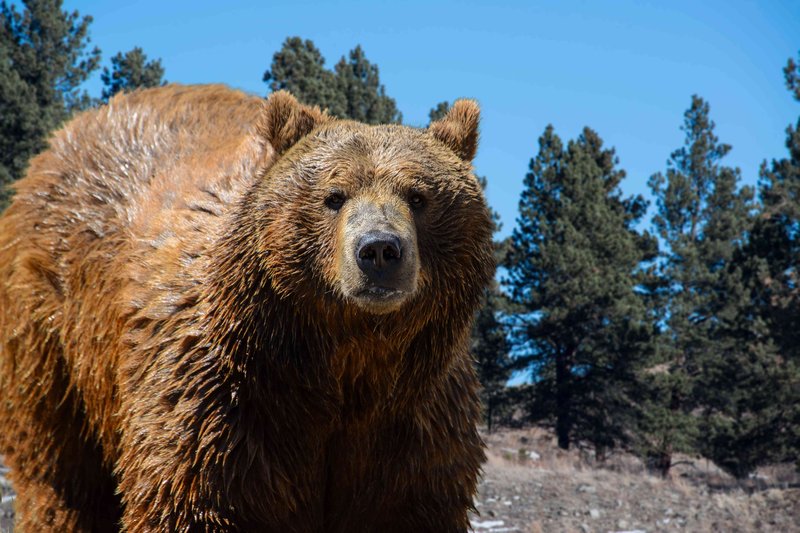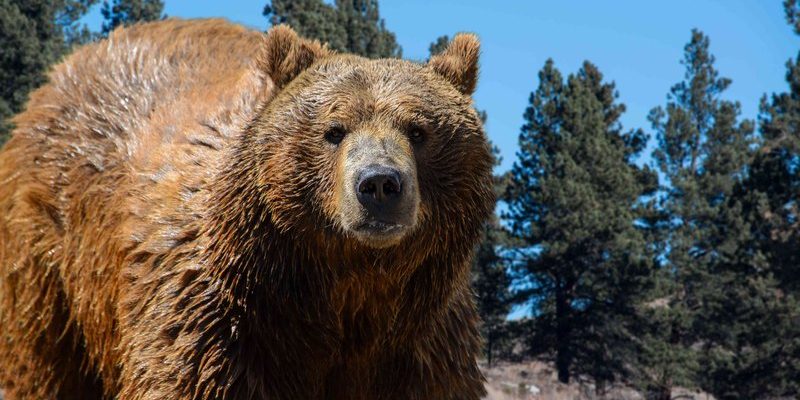
Understanding the status of grizzly bears isn’t just about knowing if they’re endangered; it’s about grasping the intricate web of nature and humanity’s impact on it. Picture a delicate balance. When you remove one piece, everything else can shift. That’s where conservation efforts come into play, aiming to protect these magnificent animals and their habitats.
In this article, we’ll explore the current status of grizzly bears, the threats they face, conservation successes, and ongoing efforts to ensure they thrive in the wild. Grab your coffee, and let’s jump in!
The Status of Grizzly Bears: Endangered or Thriving?
Grizzly bears are classified as “threatened” in the contiguous United States. This means they’re at risk of becoming endangered in the near future if conditions don’t improve. The U.S. Fish and Wildlife Service oversees their protection under the Endangered Species Act, which brings both challenges and hope for their survival.
While population numbers can fluctuate based on various factors, recent estimates say there are about 50,000 grizzly bears in North America. However, the numbers can be much lower in specific regions, like the Northern Rockies, where they have made a gradual comeback after being heavily hunted in the past.
In Canada, grizzlies are more stable, but they still face risks from habitat loss and climate change. Considering their status of being “threatened” in the U.S., it’s clear that grizzlies are not out of the woods yet. The uniqueness of their ecosystems and the interplay of human activities make their survival a complex issue worth understanding.
Threats to Grizzly Bear Populations
Grizzly bears face a multitude of threats that hinder their population growth. Here are some of the main challenges:
- Habitat Loss: As humans expand into wild areas for development, agriculture, and recreation, grizzly bears lose their natural habitats. This forces them into smaller and often less suitable areas.
- Climate Change: Changes in weather patterns impact food sources that bears rely on, like berries and salmon. Warmer temperatures can also lead to habitat degradation.
- Human Encounters: As more people hike and camp in bear territories, encounters can lead to conflicts. Sometimes, bears are relocated or worse, euthanized, if they pose a threat to human safety.
- Illegal Hunting: Poaching remains a significant issue. Though hunting is regulated in some areas, illegal hunting can still threaten certain populations.
These factors paint a concerning picture. You might be wondering, “What can be done?” That brings us to the conservation efforts aimed at turning the tide for these incredible animals.
Conservation Efforts for Grizzly Bears
Various conservation efforts are in place to protect grizzly bears and their habitats. Organizations, government agencies, and even local communities are working together to ensure these bears have a fighting chance.
One notable success story comes from Yellowstone National Park, where careful management has led to a resurgence of grizzly bear numbers. This emphasizes the importance of protected areas in safeguarding wildlife. The park serves as a sanctuary where bears can thrive without the pressures of human encroachment.
Additionally, public education plays a key role. Schools and organizations run programs to inform people about living alongside bears, encouraging safe interactions and reducing conflicts. This includes educating locals and tourists about proper food storage and bear safety practices, essential for minimizing bear-human encounters.
Emphasis on habitat protection is also crucial. Restoration projects aim to rehabilitate areas damaged by logging, mining, and other human activities. By promoting healthy ecosystems, we ensure bears have access to food and space to roam.
The Role of Legislation in Bear Conservation
Legislation is vital for protecting grizzly bear populations. The Endangered Species Act (ESA) offers legal backing for grizzly bears in the U.S. This legislation prohibits actions that could harm their populations or habitats.
Accompanying the ESA are various state and local laws focused on wildlife management. These laws help regulate hunting and manage human-bear interactions. For example, in some places, bear hunting seasons are limited or banned altogether to allow populations to recover.
Long-term conservation strategies also focus on creating wildlife corridors. These are natural pathways that allow bears to travel safely between areas, increasing genetic diversity and giving them access to more food sources. This can be accomplished through negotiations with landowners and conservation groups to set aside land.
It’s interesting how legislation can work hand-in-hand with grassroots movements. People from all walks of life come together to advocate for these creatures. This unity fuels hope for the future of grizzly bears.
Public Awareness and Community Involvement
Raising public awareness about grizzly bears can create a ripple effect in conservation efforts. When communities understand the importance of these animals, they’re more likely to support protective measures.
Community events, such as bear awareness days, can help educate locals and visitors. These gatherings often showcase conservation efforts, share bear safety tips, and highlight the ecological importance of grizzlies. By fostering a connection with these majestic creatures, people become invested in their survival.
Social media also plays a crucial role. Organizations often use platforms to share stories, updates, and educational content, reaching a wider audience. The more people know about the challenges grizzlies face, the more likely they are to advocate for their protection.
You might be surprised to know that even small actions, like responsible camping practices or reporting illegal hunting, can make a significant difference. Every effort counts in the grand scheme of conservation.
Success Stories: Grizzly Bears on the Comeback Trail
While grizzly bears face serious challenges, there are inspiring success stories that highlight how conservation can work. One notable example is the Yellowstone to Yukon Conservation Initiative. This project aims to create a connected corridor for wildlife across a vast landscape, promoting genetic diversity and allowing bears to thrive.
Another example is the reintroduction of grizzlies to areas where they had been extirpated, like parts of Idaho and Montana. This careful planning has helped stabilize populations and restore natural behaviors within the ecosystem.
These successes illustrate how dedicated efforts can yield positive outcomes. Honestly, there’s a sense of hope when we see the impact of hard work and commitment to wildlife conservation. It reminds us that with the right strategies and community involvement, we can make a difference.
The Future of Grizzly Bears
Looking ahead, the future of grizzly bears largely depends on continued conservation efforts and public support. As climate change progresses and human development encroaches on their natural habitats, challenges will persist.
However, the success stories we’ve seen show that recovery is possible. By maintaining strict protections, promoting awareness, and prioritizing habitat restoration, we can help secure a future for grizzly bears.
It’s essential to remember that every action matters. Supporting organizations dedicated to wildlife conservation, advocating for policies that protect bear habitats, and educating others about the importance of grizzlies are all steps in the right direction.
As we continue to understand the complexities of these majestic animals, let’s appreciate their role in our ecosystems and strive to ensure they roam the Earth for generations to come.
Grizzly bears are more than just big animals in the forest; they are a symbol of nature’s resilience and the interconnectedness of all living things. Protecting them is not just about saving a species; it’s about preserving the wild spirit of our planet.

